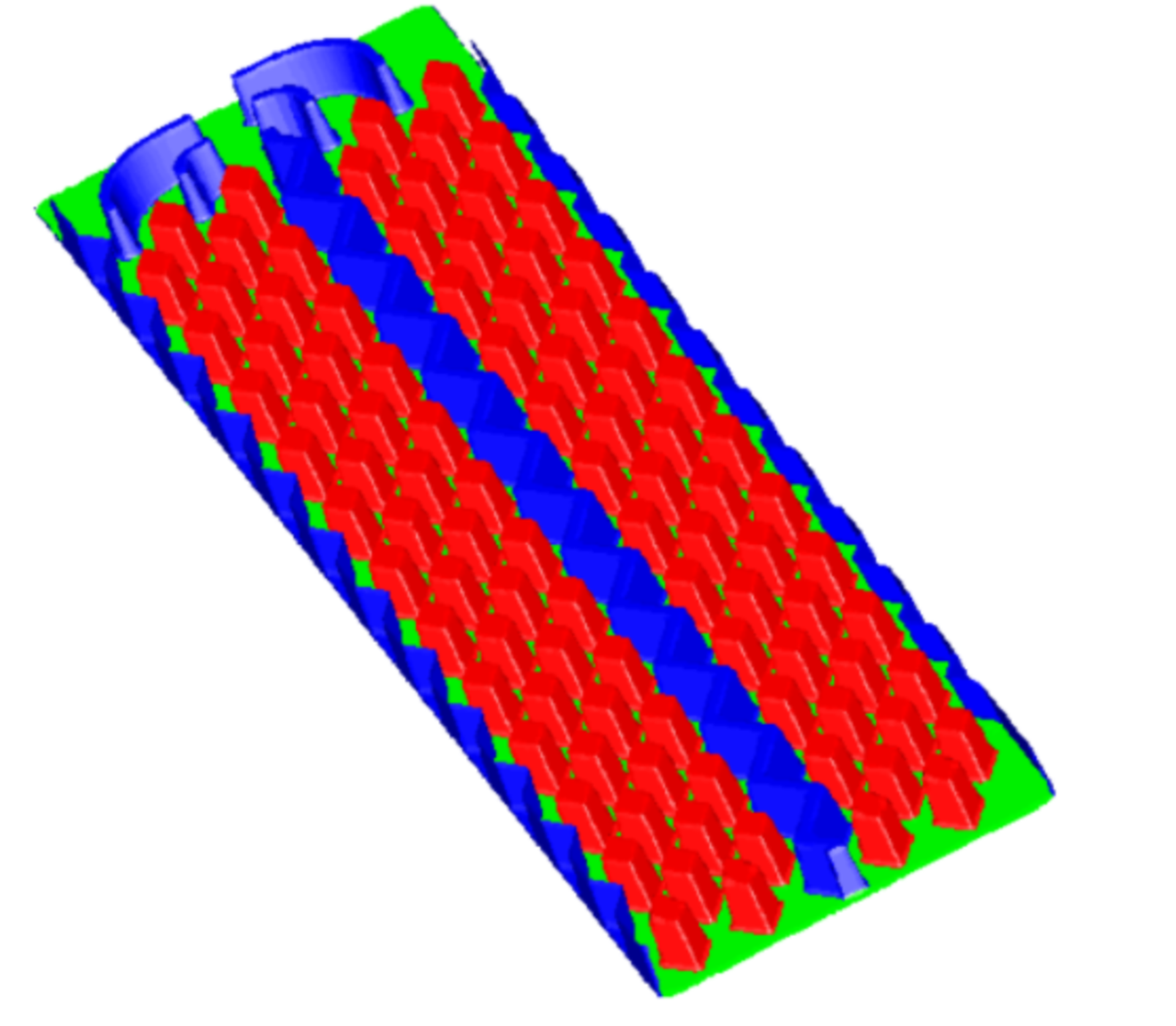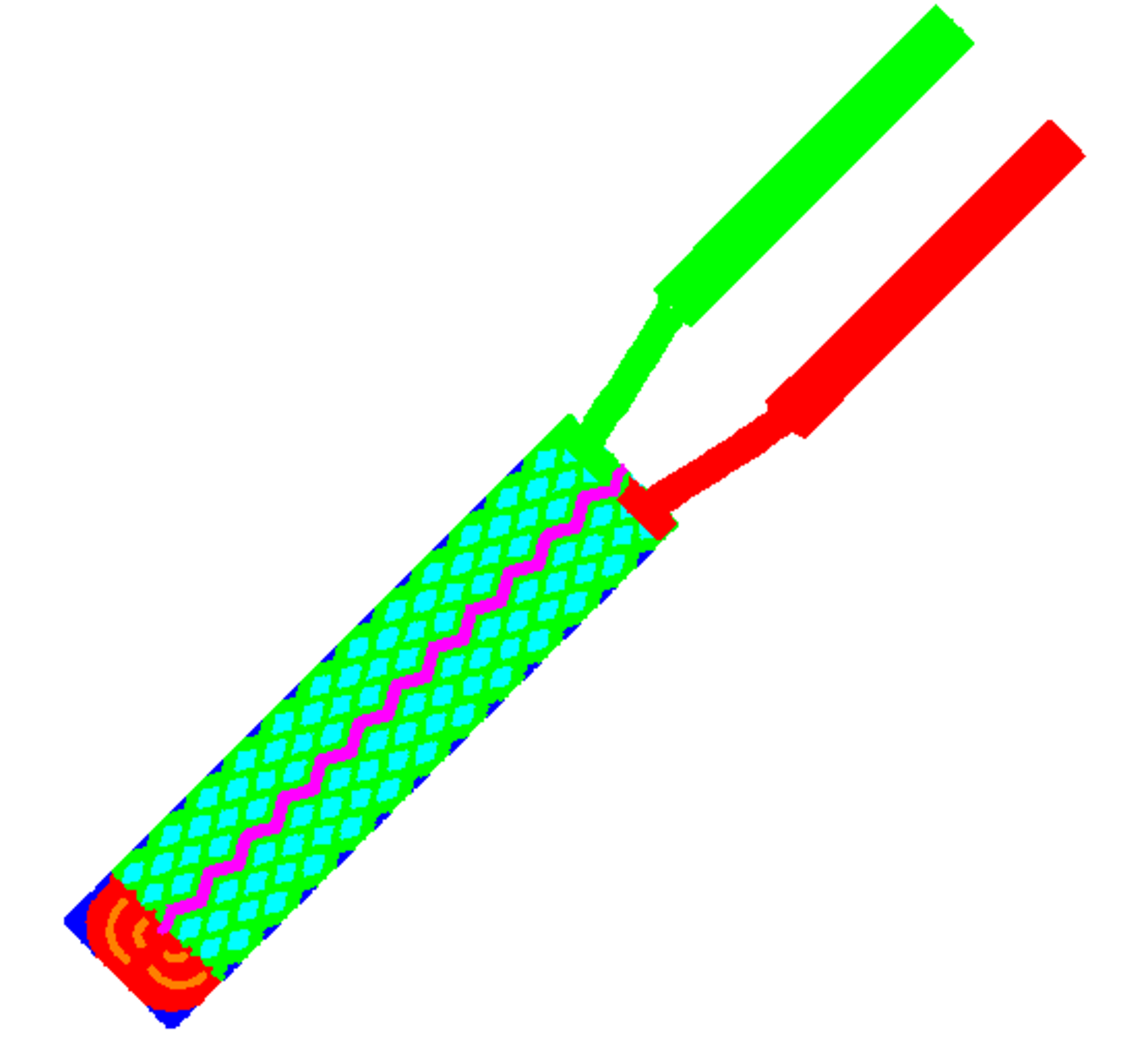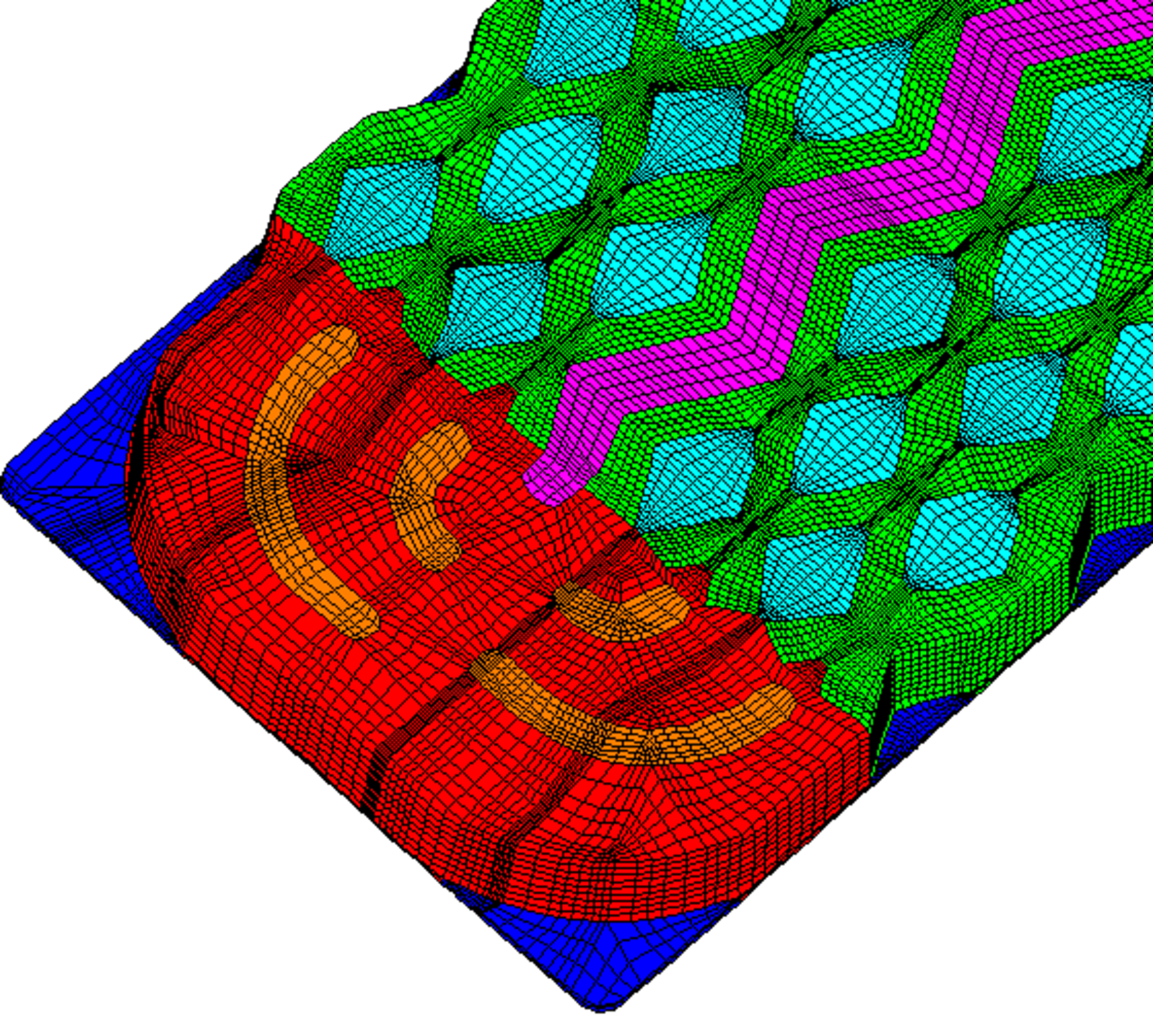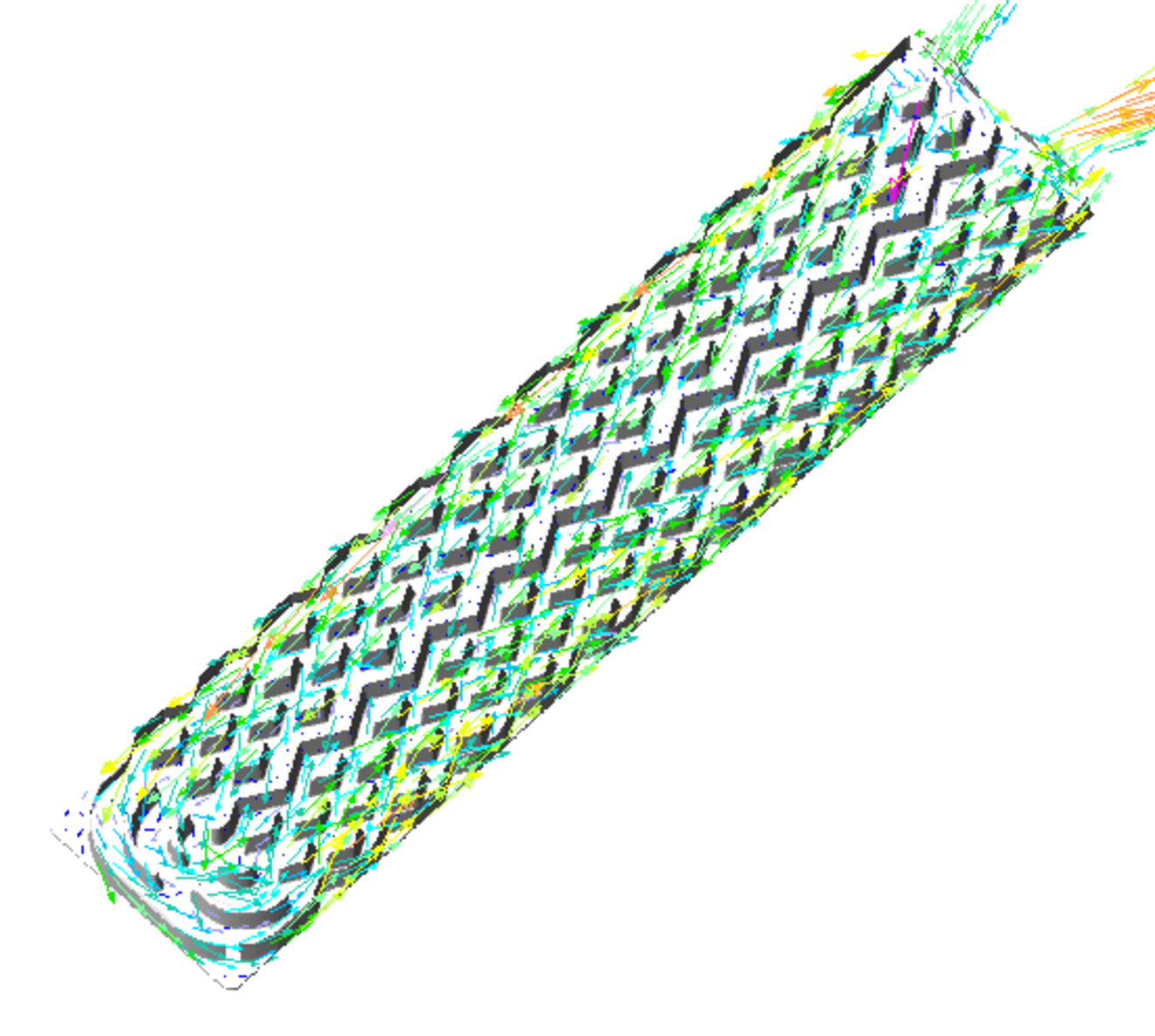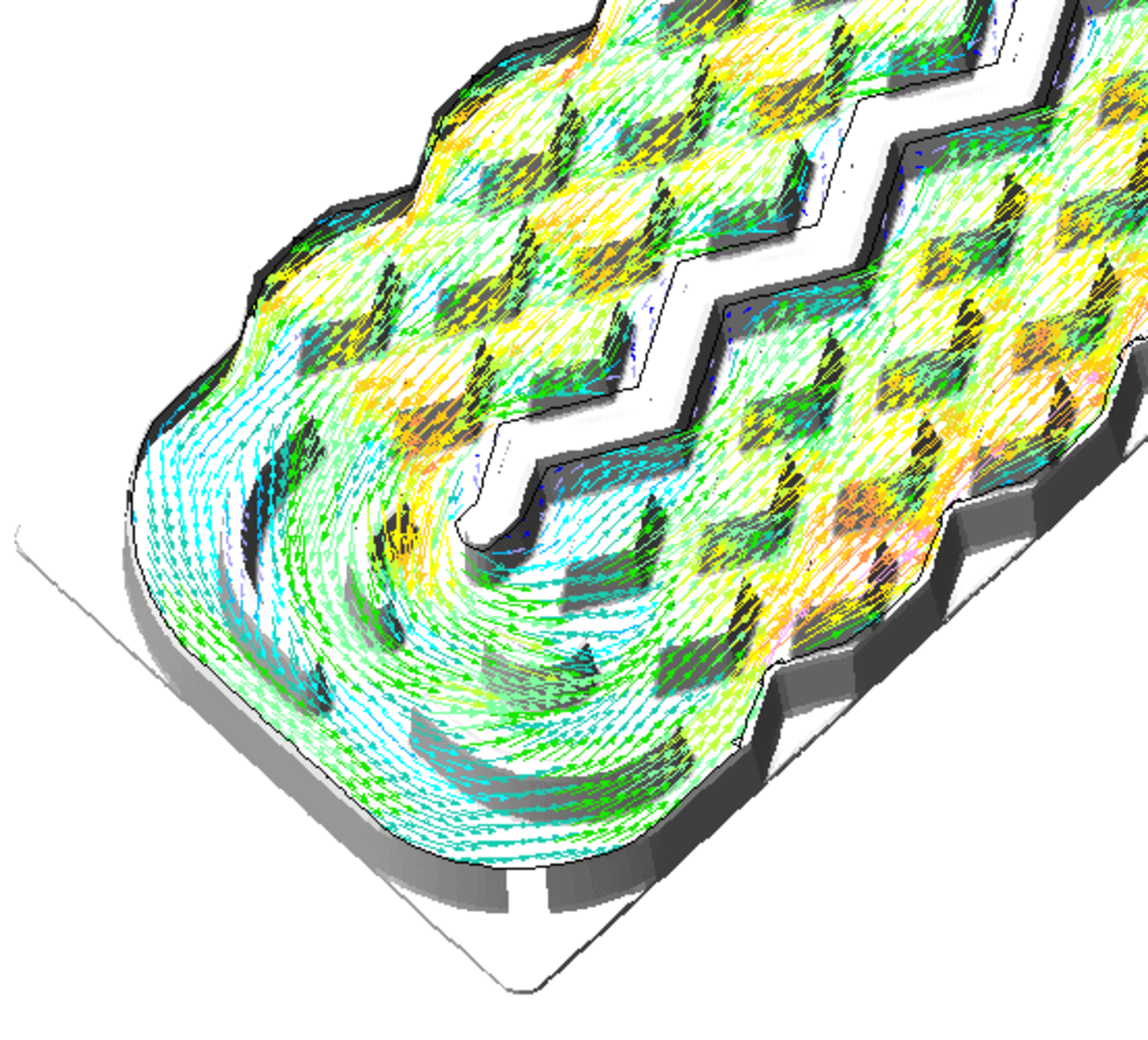Flow in cooling module
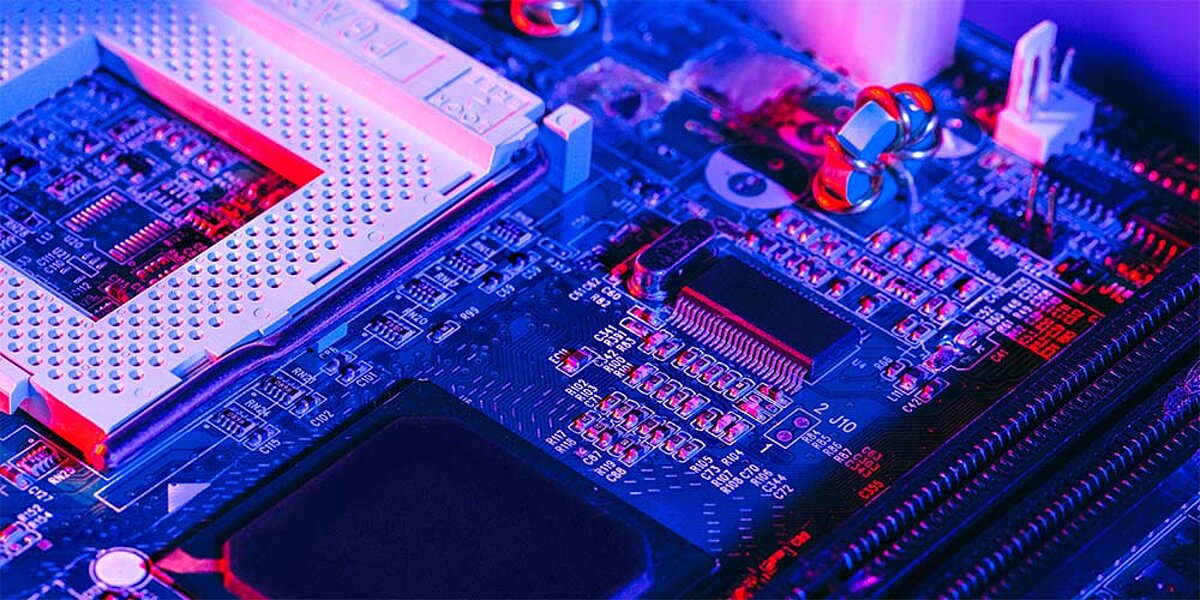

Introduction
The described project dates back to 2002. Please note the block-structured meshes, which were created by hand at that time.
To cool electronic components in vehicles, the heat generated in the electronics is transferred to the cooling liquid, a water-glycol mixture, by a heat sink. When designing the heat sink, attention must be paid not only to sufficient cooling capacity but also to the lowest possible pressure loss when the coolant flows through the cooling module.
The aim of this study is to determine the flow field and pressure losses for an existing cooling module by means of numerical simulation. The heat balance is not the subject of the investigation.
Task / Calculation
The increasing power density of electronic components results in an increasing amount of heat that must be dissipated to prevent the electronic components from overheating.
In this example, the flow through the gaps between the partition and the lid should also be taken into account.
The heat dissipation of the electronics at the top of the lid should be as uniform as possible to avoid excessive temperature gradients.
The pressure loss should be evaluated and optimized.
Results
The investigation showed that the flow is characterized by significant losses. The flow field clearly showed that in the middle and rear areas of the cooling module, the cooling effect is lower than in the front area. As measures, it was suggested to seal the gap between the partition and the cover, to dispense with the bypass flow over the partition and to flow through the entire cooling module.
In order to reduce the high pressure losses with sufficient cooling, part of the cooling channels can be dispensed with. The measures were successfully implemented.
Current status
In the meantime, in comparable investigations, the heat losses of the electronic elements are also taken into account and the flow calculation is also carried out transiently, if necessary, with consideration of the temperatures and phase transformations.
In this case, the meshing is automated, taking into account the thermal boundary layers in a fraction of the time. However, a rough evaluation can still be made on the basis of a pure flow consideration.
With kind permission of Conti Temic microelectronic GmbH, Nuremberg
